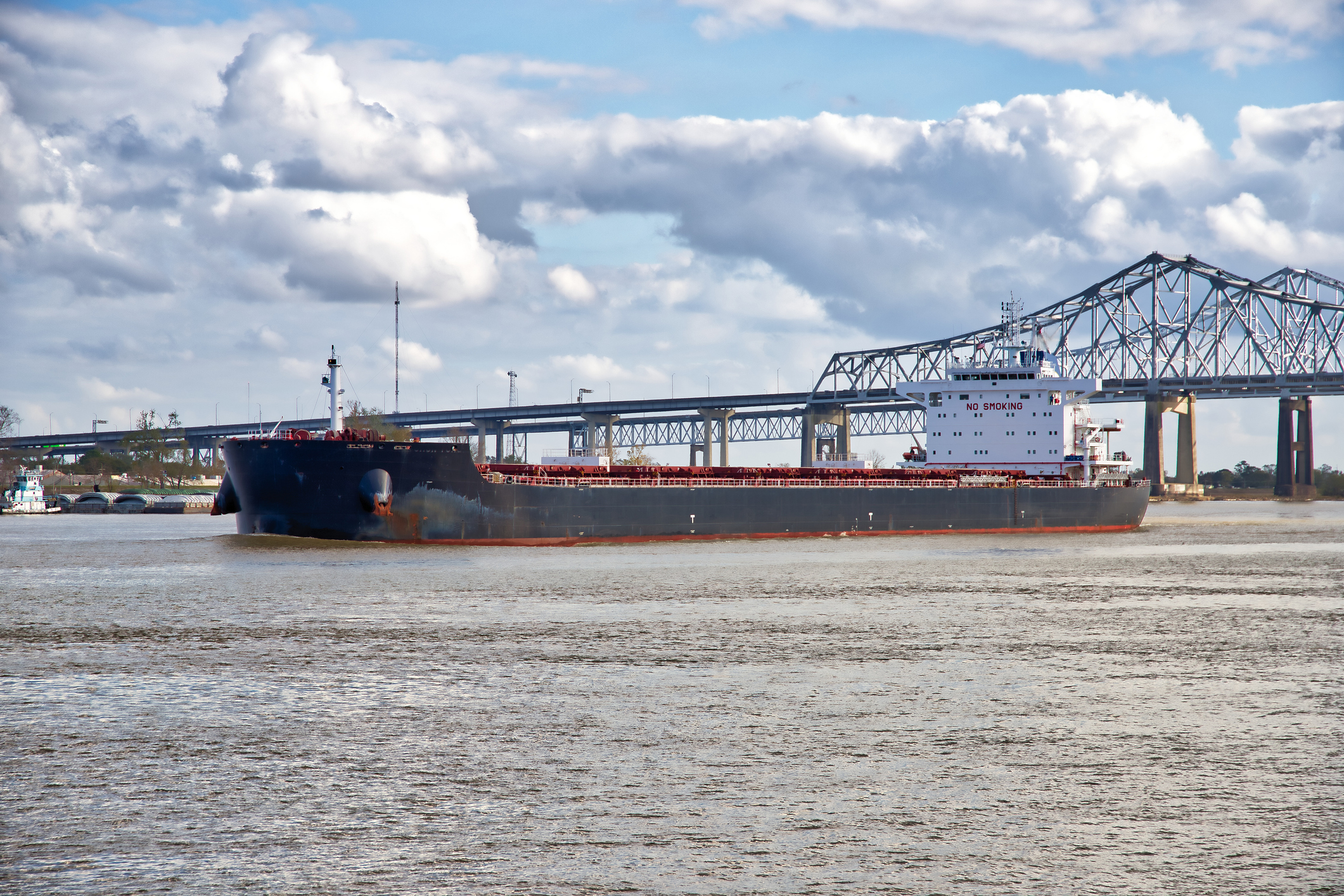A group of 12 Korean trade officials—11 of them grain buyers—recently spent a whirlwind week from April 21 through 27 touring trading facilities, farms, ports, dams and terminals in the Midwest and West Coast. The tour was organized and led by Guy Allen, senior economist in the International Grains Program, part of the Department of Grain Science and Industry at Kansas State University. Participants were sponsored by KOAA (the Korea Overseas Agro-resources-development Association) who is a government sponsored partner for the globalization of Korean agricultural business.
Participants included buyers specializing in wheat, corn, soybeans and sorghum. The IGP Grain Export Supply Chain Expedition began with a visit to the Chicago Mercantile Exchange, nerve center of commodities trading in North America. The groups also visited the Chicago offices of clearing firm of Cunningham Commodities and introducing brokers Advance Trading, Inc..
Next the group travelled to Joliet, Ill., where they visited the Joliet Container Logistics Center and the DeLong Grain Company Container terminal, as well as the Marquis Grain Company facility in Hennepin, Ill.. Finally, the group visited the James Martin farm in Pontiac, Ill. Martin is a fifth-generation farmer who produces soybeans and corn, as well as serving as a district director and a member of the ISA Soybean Production and Finance Committees.
The group finished the day in Peoria, where they were joined at dinner by Robert Sinkler, former commander of the Rock Island Engineer District and now a consultant who has been instrumental in joining together many of the small ports and terminals in the Upper Mississippi and Illinois rivers into statistical port districts.
April 24 began with a visit to Reid’s Yellow Dent Corn Monument. In Tazewell County. James Reid was a renowned farmer in central Illinois in the mid-1800s, who crossed Gourdseed with Little Yellow Corn, a northern flint, and after many years, created Reid’s yellow dent. a corn strain that revolutionized yields and served as the basis for most of today’s varieties. Reid’s great-grandson Matt Shipton works in the seed industry today. A tour of the Encompass Grain’s Union Pacific Railroad shuttle train loader at Allen Station, west of the elevator in San Jose, Ill., followed.
From central Illinois, the group headed to St. Louis, where they toured the Mel Price Lock and Dam, the last lock in the Upper Mississippi River system, located at Mile 200.78 on the Upper Mississippi River 17 miles north of St. Louis, and a key transit point for grain cargoes southbound to the Gulf Coast for export.
The group took an early morning flight April 24 to Portland, Ore., where after lunch they met with members of the Oregon Wheat commission and toured the Shaver Barge Transportation facility with Rob Rich, vice president of marine services. Shaver is a family-owned tug and barge company based in Portland that has been transporting freight on the Columbia-Snake River System since 1880. Shaver’s fleet includes 15 tugs and 22 barges with a combined capacity of almost 69,800 short tons. Their barges are designed to transport grain and bulk commodities. Shaver also offers ship assist and harbor/specialty towing services.
Friday was an all-grain day, starting with a briefing at the Albers Mill Building of U.S. Wheat Associates followed by a tour of the Wheat Marketing Center. The Columbia-Snake River system is a major export gateway for wheat headed for Asian markets. If its locks and dams are breached (as some almon advocates want to do), it will have a severe negative impact on wheat farming in the whole region.
The group next visited the Federal Grain Inspection Service. After lunch at Twigs bistro, they toured United Grain Corporation’s export terminal at Vancouver, Washington.
After a strenuous day, the group had a relaxing sunset dinner cruise up the Willamette River on the Spirit of Portland, enjoying views of the Portland skyline and the city’s main landmarks, and a meal of Pacific Northwest ingredients.
Trips like this can be very productive, said Allen. Other KSU IGP course are sponsored by groups like the National Corn Growers Association, American Soybean Association, US Wheat Associates, or the USDA.
“The group asked a lot of good, informed questions,” Allen said. “Trade flows are changing. A lot of Korean and other Asian buyers buy grain and commodities that may see their final destination re-routed to other East Asian markets such as China, Indonesia, Japan, Thailand and other markets. Pacific Northwest basis [the difference between cash price and a futures contract] is high, pulling grain almost from the Illinois river [to the PNW]. In the greater macro-economic picture, China is losing its comparative advantage and productivity edge as companies seek to shorten their supply chains and moving their product production to other locations.”




